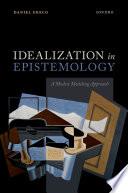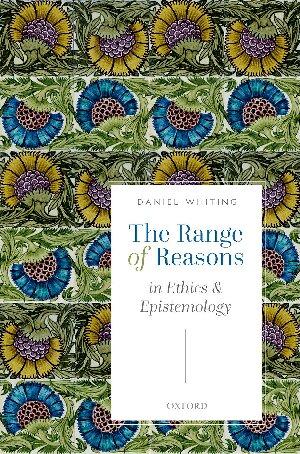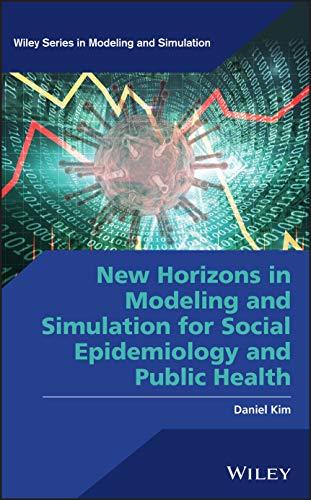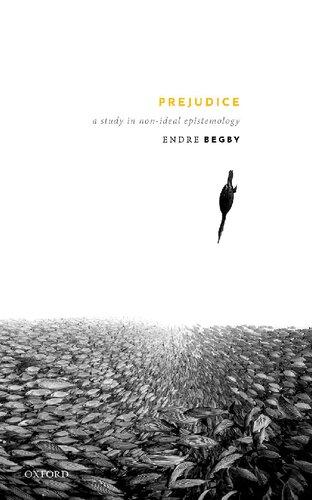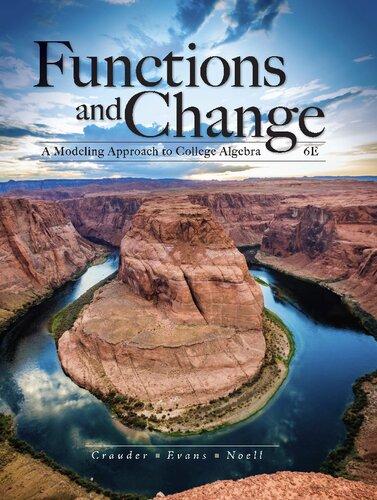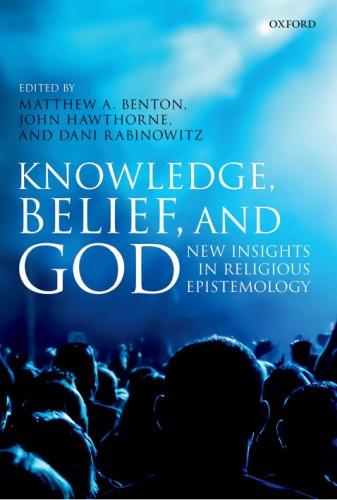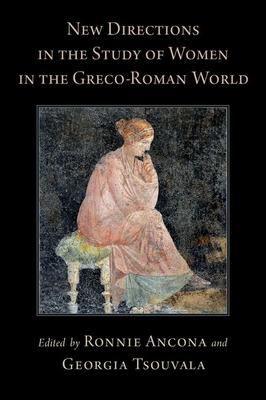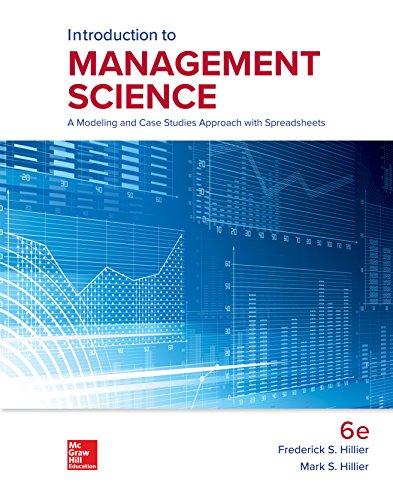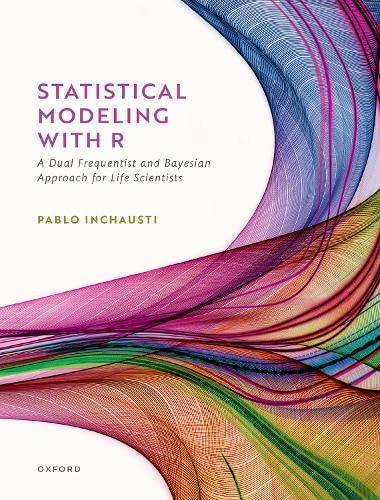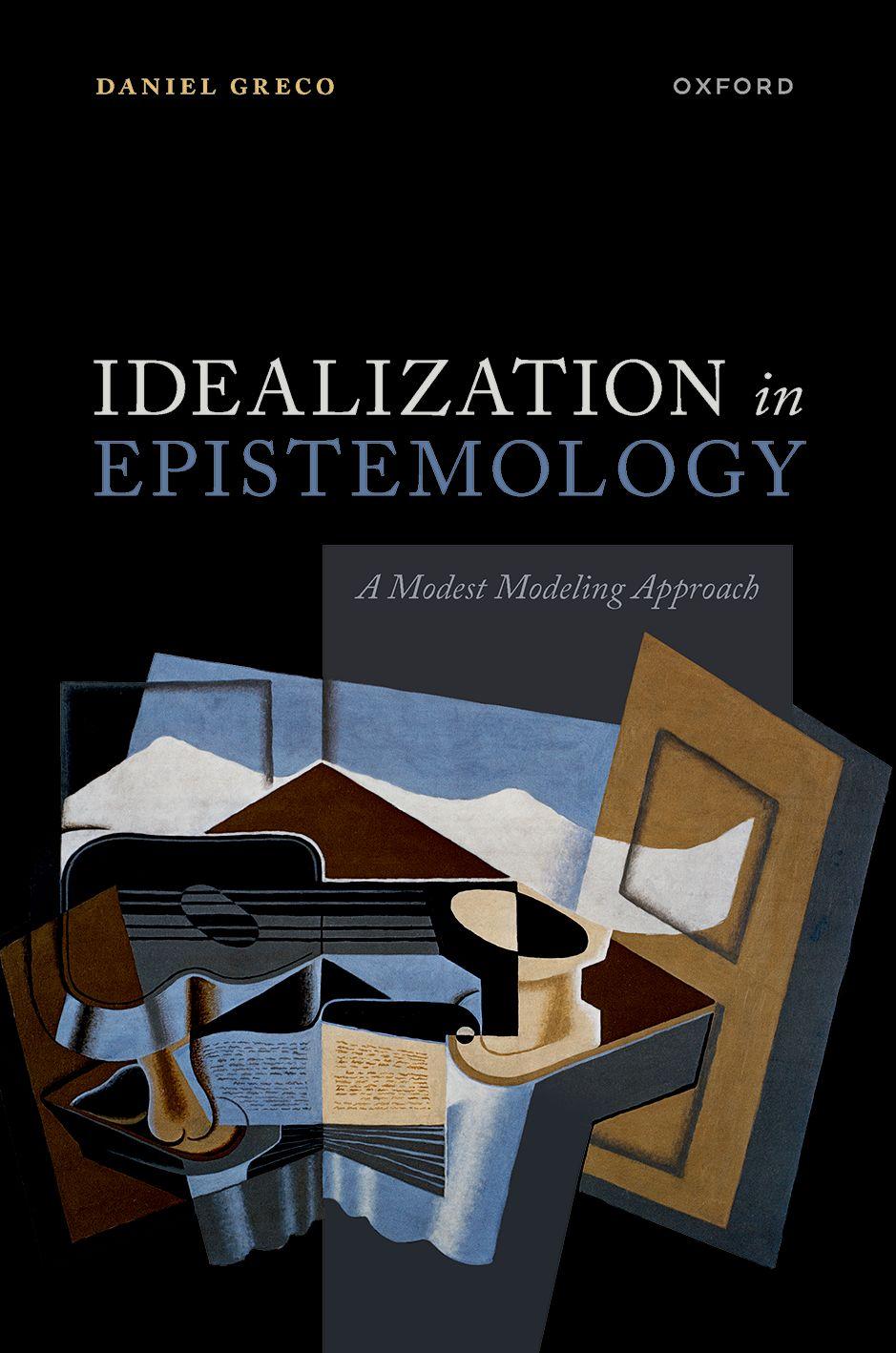Visit to download the full and correct content document: https://ebookmass.com/product/idealization-in-epistemology-a-modest-modeling-appr oach-daniel-greco/
More products digital (pdf, epub, mobi) instant download maybe you interests ...
The Range of Reasons: in Ethics and Epistemology 1st Edition Daniel Whiting
https://ebookmass.com/product/the-range-of-reasons-in-ethics-andepistemology-1st-edition-daniel-whiting/
New Horizons in Modeling and Simulation for Social Epidemiology and Public Health Daniel Kim
https://ebookmass.com/product/new-horizons-in-modeling-andsimulation-for-social-epidemiology-and-public-health-daniel-kim/
Prejudice: A Study in Non-Ideal Epistemology Endre
Begby
https://ebookmass.com/product/prejudice-a-study-in-non-idealepistemology-endre-begby/
Epidemiology by Design: A Causal Approach to the Health Sciences Daniel Westreich
https://ebookmass.com/product/epidemiology-by-design-a-causalapproach-to-the-health-sciences-daniel-westreich/
Functions and Change: A Modeling Approach to College Algebra 6th Edition Bruce Crauder
https://ebookmass.com/product/functions-and-change-a-modelingapproach-to-college-algebra-6th-edition-bruce-crauder/
Knowledge, Belief, and God: New Insights in Religious Epistemology Matthew A. Benton
https://ebookmass.com/product/knowledge-belief-and-god-newinsights-in-religious-epistemology-matthew-a-benton/
New Directions in the Study of Women in the Greco-Roman World Ronnie Ancona
https://ebookmass.com/product/new-directions-in-the-study-ofwomen-in-the-greco-roman-world-ronnie-ancona/
Introduction to Management Science: A Modeling and Case Studies Approach with Spreadsheets – Ebook PDF Version
https://ebookmass.com/product/introduction-to-management-sciencea-modeling-and-case-studies-approach-with-spreadsheets-ebook-pdfversion/
Statistical Modeling With R: A Dual Frequentist and Bayesian Approach for Life Scientists Pablo Inchausti
https://ebookmass.com/product/statistical-modeling-with-r-a-dualfrequentist-and-bayesian-approach-for-life-scientists-pabloinchausti/
IdealizationinEpistemology Idealizationin Epistemology AModestModelingApproach DANIELGRECO GreatClarendonStreet,Oxford,OX26DP, UnitedKingdom
OxfordUniversityPressisadepartmentoftheUniversityofOxford. ItfurtherstheUniversity’sobjectiveofexcellenceinresearch,scholarship, andeducationbypublishingworldwide.Oxfordisaregisteredtrademarkof OxfordUniversityPressintheUKandincertainothercountries ©DanielGreco2023
Themoralrightsoftheauthorhavebeenasserted Allrightsreserved.Nopartofthispublicationmaybereproduced,storedin aretrievalsystem,ortransmitted,inanyformorbyanymeans,withoutthe priorpermissioninwritingofOxfordUniversityPress,orasexpresslypermitted bylaw,bylicenceorundertermsagreedwiththeappropriatereprographics rightsorganization.Enquiriesconcerningreproductionoutsidethescopeofthe aboveshouldbesenttotheRightsDepartment,OxfordUniversityPress,atthe addressabove
Youmustnotcirculatethisworkinanyotherform andyoumustimposethissameconditiononanyacquirer
PublishedintheUnitedStatesofAmericabyOxfordUniversityPress 198MadisonAvenue,NewYork,NY10016,UnitedStatesofAmerica BritishLibraryCataloguinginPublicationData Dataavailable
LibraryofCongressControlNumber:2023931431
ISBN978–0–19–886055–6
DOI:10.1093/oso/9780198860556.001.0001
Printedandboundby CPIGroup(UK)Ltd,Croydon,CR04YY
LinkstothirdpartywebsitesareprovidedbyOxfordingoodfaithand forinformationonly.Oxforddisclaimsanyresponsibilityforthematerials containedinanythirdpartywebsitereferencedinthiswork.
Acknowledgments IamextremelygratefultothemanyfriendsandcolleagueswithwhomI’ve discussedtheideasinthisbook,someofwhomreadsubstantialportions ofitindraft.IwouldliketothankBobBeddor,SamBertsler,RayBriggs, JenniferCarr,DavidChalmers,TimCrane,RobinDembroff,KevinDorst, KennyEaswaran,SimonGoldstein,NedHall,VerityHarte,SophieHorowitz, HarveyLederman,Anna-SaraMalmgren,AlexMeehan,LauriePaul,Agustín Rayo,MiriamSchoenfield,DeclanSmithies,JackSpencer,JasonStanley, ScottSturgeon,ZoltánGendlerSzabó,RogerWhite,RobbieWilliams,Tim Williamson,SethYalcin,andespeciallyBrianHedden,whogavemeextensive commentsonaninitialcompletedraftand then arewrittenone.Thanksalso totworefereesfromOxfordUniversityPressfortheirinsightfulanddetailed comments.AndthankstoPaulForresterforinsightfulsubstantivecomments, andforcatchinganembarrassinglylargenumberoftypographicalerrors.
Ipresentedmaterialfromthisbookatanumberofconferencesanduniversities.Thankstoaudiencesatthe2019EpistemologyWorkshopatthe NationalUniversityofSingapore,the2019GoetheEpistemologyMeetingat theUniversityofFrankfurt,the2019EvidenceandKnowledgeWorkshopat theUniversityofGlasgow,the2020RanchMetaphysicsConference,the2022 CentralDivisionmeetingoftheAPA,the2021IdealandNon-IdealEpistemologyvirtualseminarseries,the2022NortheastNormativityWorkshop,the UniversityofCologne,RutgersUniversity,andtheUniversityofStanford.
ThankstothemembersofPHIL762:IdealizationandModel-Buildingin ScienceandPhilosophy,whogavemeextremelyhelpfulfeedbackonsome earlydraftmaterial.
ThanksespeciallytoKareemKhalifa,DanSinger,andBobStalnaker,who gavemeinvaluablecommentsatamanuscriptworkshophostedbyYale University(thankstoYaletoo.)
Iamgratefulforpermissiontousematerialoriginallypublishedelsewhere. Chapter3isadaptedfrom“FragmentationandCoarse-GrainedContent,” in TheFragmentedMind,publishedbyOxfordUniversityPress.Ialsouse shortersectionsof“CognitiveMobileHomes”(publishedin Mind in2017) and“IterationPrinciplesinEpistemology:ArgumentsFor”(publishedin PhilosophyCompass in2015)inChapters4and7,respectively.
Andthanksofcoursetomyfamily:Ivana,Ben,andSam.
Introduction Inhisrecentbook AsIf:IdealizationandIdeals (2017),KwameAnthony Appiahmakesacaseforthesignificanceofidealizationinphilosophy:
ofteninphilosophyitisusefultostandbackandtakeabroadviewofatopic, knowingthatrealprogressrequiresworkwithanarrowerfocusaswell.Ioffer thisbookinthatspirit,hopingthatitwillproveusefulinencouragingfurther explorationsofidealizationinaesthetics,ethics,andmetaphysics,aswellasin thephilosophyofmind,oflanguage,ofreligion,andofthesocialandnatural sciences....
Myaim,then,isnotsomuchtoannounceanystartlingdiscoveriesasto persuadeyouthatidealizationmattersinallthemajorareasofthehumanities andthesciencesandineverydaylife,andtocommenditasatopicof reflectionandresearch.(pp.ix–x)
ThepresentbookisinthespiritofAppiah’scommendation.LikeAppiah, Ithinkidealizationisubiquitousinphilosophyandeverydaylife.Myfocus, however,willbeonidealizationinepistemology.Ofcourse,epistemologists havebeenbuildingidealizedmodelsforoveracenturynow—representing beliefchangeusingthemathematicalformalismsofprobabilitytheoryand modallogicisawellestablishedpractice.Butwhilethepracticeofconstructing idealizedmodelsinepistemologyisold,metaepistemologicalreflectiononthe significanceofthatpracticeisnot.1InthisbookI’lltrytodemonstratethat thefactthatepistemologistsbuildidealizedmodelsisn’tmerelyametaepistemologicalobservationthatcanleavefirst-orderepistemologicaldebates untouched.Rather,onceweviewepistemologythroughthelensofidealization andmodel-building,thelandscapelooksquitedifferent.
“It’sjustamodel”issometimesusedasashieldtoblunttheforceofan objection,butit’sashieldthatcanseemtodiminishitsbearer.Inusing it,oneseemstoconcedethatone’ssightsarelessloftythantheymightbe. “I’llleavetoother,moreambitiousthinkers,thetaskofcomingupwiththe
1 ThoughseeTitelbaum(2012),Yap(2014),andWilliamson(2017). IdealizationinEpistemology:AModestModelingApproach.DanielGreco,OxfordUniversityPress.©DanielGreco2023. DOI:10.1093/oso/9780198860556.003.0001
final,comprehensivephilosophicaltheoryofknowledge(orjustification,or evidence,orrationality,etc.);I’mjustbuildingmodels.”Thiscansoundlikean abdicationofthemeteandproperroleofphilosophy.
Tothecontrary,I’llarguethatconstructingidealizedmodelsislikelythe bestwecandoasepistemologists.Therearegoodreasonstosuspectthatonce westartusingepistemologicalcategorieslikebelief,knowledge,andconfidence,we’vealreadyenteredtherealmofidealizationandmodel-building. Soanon-idealized,comprehensive,andcompletetheoryofthesephenomena maybeanoxymoron—akintoanon-idealizedtheoryoffrictionlessplanes. Wecanobjecttoamodelofknowledgebypointingtoabettermodel,butin theabsenceofabettermodel,thefactthataframeworkforepistemological theorizinginvolvessimplifications,approximations,andotherinaccuracies— thefactofitsstatusasanidealizedmodel—isnotinitselfobjectionable.
Onceweacceptthattheorizinginepistemologicaltermsisinescapably idealized,anumberofintriguingpossibilitiesopenup.I’lldefendapackageof first-orderepistemologicalviewsthatmightotherwisehavelookedindefensiblydismissiveofourcognitivelimitations—apackageaccordingtowhichwe knowawidevarietyoffactswithcertainty,includingwhatourevidenceis, whatweknowanddon’tknow,andwhatfollowsfromourknowledge.This packageturnsouttobemuchmoreplausibleonceviewedthroughthelensof idealization;apparentlydevastatingobjectionscanbefinessed,andapparently adhocfeaturesofthepackagecometolooknaturalandelegant.
I’llalsoarguethatwecanseeanovelroutetosomethinglikecontextualisminepistemologyonceweadoptthemethodologicalapproachIurge. Traditionalversionsofcontextualismaremotivatedbylinguisticanalogies— contextualistsarguethat“knows”behaveslikeothercontext-sensitivepieces oflanguagesuchas“tall”or“rich,”2whiletheiropponentspointtostriking dissimilarities.3Bycontrast,Idon’tfocusonlinguisticanalogiesbetween “knows”andothercontext-sensitivepiecesoflanguage.Rather,Ifocuson analogiesbetweenthetheoreticalrolesofepistemologicalcategories,andthe theoreticalrolesofcategoriesinscienceswhereamodelingapproachisoften viewedasattractive.Theeconomistwhousesdifferent,incompatiblemodelsof themacroeconomyindifferenttheoreticalcontexts,orfordifferentpractical purposes,needn’tembraceanydistinctivesemanticthesesabout“money,” “growth,”or“inflation.”Thebiologistwhousesapluralityofmodelsofspecies, genes,ororganisms,needn’tembraceanydistinctivesemanticthesesabout “species,”“gene,”or“organism.”Similarlybutmorecontroversially,Iclaim,
2 E.g.,Cohen(1999). 3 E.g.,Stanley(2005).
theepistemologistwhousesdifferent,incompatiblemodelsofknowledge indifferenttheoreticalcontexts,orfordifferentpracticalpurposes,needn’t embraceanydistinctivesemanticthesisabouttheword“knows.”
IntheremainderofthisintroductionI’llprovideabriefoutlineofeachchapter.ReaderswhowanttojumprightinshouldfeelfreetoskiptoChapter1.
InChapter1I’llintroducetheconceptsofidealizationandmodeling, discusstheirrelation,andprovidesomeexamplesofmodel-buildingin philosophy.
Iclaimthatnotonlydoesepistemologyinvolvemodeling,butepistemologicalmodelingshouldbe modest.InChapter2,I’llexplainwhatImeanby modestmodeling,andwillintroduceandmotivatetheconceptviaexamples fromeconomics.Inanutshell,amodestmodelerisn’ttryingtopointtheway towardssomegrandunifiedtheoryofthedomainshestudies.She’llbecontent withtheideathatinsomedomains,acollectionofmodels,eachpartialand lessthanfullyaccurate,isthebestweshouldhopefor.
FromChapter3onwardsI’llturntoapplications,startingwiththecaseof usingsetsofpossibleworldstomodelthecontentsofbeliefandknowledge. Whilethevirtuesofthisapproacharewellknown,italsofacesafamilyof familiarobjections.Afamiliarresponsetotheseobjectionsinvolveswhat’s knownas“fragmentation,”theideathatagentsshouldn’tbemodeledas havingasinglesetofpropositionalattitudes,butinsteadmultiple,inconsistent, “fragmented”sets.Thisthoughthasseemedtomanylikeadesperate,ad hocmaneuvermadetosavepossibleworldstheoriesofcontentfromdevastatingcounterexamples.Tothecontrary,I’llarguethatwecanmotivate fragmentationistideasfromfirstprinciples,independentlyoftheneedto avoidrefutation.I’llarguethat,givenapopularviewaboutthenatureofthe mind—interpretivism,ofthesortdefendedbyDavidson,Lewis,Stalnaker, andDennett—all propositionalattitudeascriptioninvolvesakindofimplicit modelconstruction;tohaveapropositionalattitudeistobesuchthatacertain kindofinterpretertryingtopredictand/orexplainyourbehaviorwouldmodel youashavingthatattitude.Andifourinterpreterisamodestmodeler,then shewillbecontentusingdifferentmodelsindifferentcontexts.Whenengaged inonetheoreticalproject,shemightmodelsomeagentashavingsomesetof propositionalattitudes,butwhenengagedinotherprojects,shewillmodel thatverysameagentashavingdifferent,incompatibleattitudes.
Havingmotivatedfragmentationistviewsofthemindviainterpretivism andmodestmodeling,I’lldiscusstherelationshipbetweenfragmentation andcontextualism.Inshort,oncewearefragmentationists,abroadlycontextualisttheoryofbeliefattributionisextremelynatural.I’llcallthesortof
contextualismemerges“modelcontextualism,”andwilldiscussitsrelationship toextantformsofcontextualismintheliterature.
InChapter4I’llturntothetopicofcertainty.Muchepistemological modelingrepresentsagentsascertainofavarietyoffacts—logicaltruths, theirevidence,whatevertheyknow.But—soacommonnarrativegoes—ever sincethefailureoftheCartesianprojectwe’veknownthatalmostnothingis certain.Thismightseemlikeanaturalplacetostarttalkingaboutidealization; it’sfruitfulforvariouspurposestorepresentfactsascertainwhen,strictly speaking,they’remerelyhighlyprobable.ThisisnottheapproachI’lldefend. WhileI’llagreethatwe’reidealizingwhenwerepresentagentsasbeingcertain, I’llargueit’stooquicktoassumethattherearestricttruthstotheeffectthat whatwerepresentascertainisinsteadmerelyhighlyprobable.
InChapter5I’llapplysomelessonsfromChapter4toquestionsabout therelationshipbetweenfolkpsychologicalcategorieslikebelief,anddecision theoreticcategorieslikecredence.Inparticular,I’llarguethattheideathat folkpsychologyhasadistinctandineliminableroletoplayinexplaining certainaspectsofourcognitivelives—onethatcannotbecooptedbydecision theory—looksagooddeallessplausibleoncetheselessonsareappreciated. Thisisbecausedecisiontheory can makeliberaluseofcertainties,andthese certaintiescandothetheoreticalworkoftenclaimedtobethedistinctive purviewoffolkpsychologicalbelief.
InChapters6and7I’llshiftfocustoissuesinvolvinghigher-orderevidence andknowledge.It’scommonpracticeinepistemologytodistinguishbetween claimsatdifferentepistemiclevels.JustaswecanaskwhetherIknowthatP,we canaskwhetherIknowthatIknowthatP,orwhetherIknowthatIknowthat IknowthatP,andsoonallthewayup.Likewisewithotherepistemological concepts,suchasprobability,evidence,andrationality.Wecanaskwhether Pisprobable,butalsowhetheritisprobable ��ℎ���� Pisprobable,orwhether it’srationaltobelievethatP,butalsowhetherit’srationaltobelieve ��ℎ���� it’s rationaltobelievethatP.Questionsabouttherelationshipsbetweenepistemic levelsturnouttoberelevanttoawiderangeofepistemologicaldebates. Certainskepticalargumentsrelyonstrongclaimsaboutthelinksbetween differentepistemiclevels,andmanyphilosophershavethoughtthatwemust rejecttheselevel-bridgingclaimsifwearetoavoidskepticism.Morerecently, debatesabouthowweoughttorespondtoevidenceofourownfallibility— forexample,debatesabouttheepistemicsignificanceofdisagreement—have oftenhingedonwhethersomelevel-bridgingclaimistrue.
InChapter6I’llarguethatmanycasesthathavebeenseenasillustrating divergencesbetweenfirst-orderandhigher-orderepistemicstatuses—cases
wheresomeoneknows,butdoesn’tknowthatsheknows,orhasevidence,but lacksevidence that shehasevidence—arebetterunderstoodinotherterms. Wecanmodelsuchcasesinaframeworkinwhichhigher-orderintrapersonal knowledgeandevidencearetrivial,solongaswearemodestmodelerswho acceptthatnosinglemodelinthatframeworkcancaptureeverythingwemight hopefor.
InChapter7I’lldefendthefruitfulnessofmodelsincludingcommon knowledge—knowledgethatweknowthatweknow...adinfinitum—against somerecentattacks.Someofthoseattacks—fromWilliamson,Hawthorne, andMagidor—turnonrejectingthesortsofprinciplesconcerningrelations betweenfirst-orderandhigher-orderknowledgethatIdefendinChapter6. Another,duetoHarveyLederman,doesnot;LedermangrantstheKKthesis— ifyouknowthatP,youknowthatyouknow—forthesakeofargument, andcontendsthatevenwiththatmajorconcession,commonknowledgeis impossible.Ultimately,I’llarguethatLederman’sstrategylooksmuchless persuasiveonceweadoptamodestmodelingperspective.
FinallyI’llconcludeinChapter8byconsideringhowtheperspective developedintheprecedingchaptersbearsondebatesabouttherelationship between“ideal”and“non-ideal”theoryinepistemology.
IdealizationandModeling Both“idealization”and“modeling”areusedinabewilderingvarietyofways, acrossmanyliteratures.Asafirstpass,wecandistinguishbetweenbroader andnarrowerconstrualsoftheseterms.Somewritersdistinguishidealization fromabstraction,simplification,andapproximation,whileothersuseitas moreofanumbrellatermforacceptableinnacuracy.Similarly,somewriters use“modeling”asatermforadistinctivetypeofinquirythatsomebut notallscientistsengagein,1whileothersuseitasanumbrellatermforthe constructionofrepresentationsthatfittheirtargetsonlyinlimitedrespectsor degrees;anactivityallpeople—andafortiori,allscientists—engagein.
Myownuseofthesetermswillberathercapacious.HereI’mfollowing Giere(1988),whodidasmuchasanyoneelsetoinspirethe“modelingturn” inthephilosophyofscience.Giereofferedwhathecalleda“cognitive”theory ofscience.Thecentralanalogyofhisbookwasbetweenthementalmodels studiedbycognitivescientists,andscientifictheoriesmoregenerally:
Iwillarguethatscientifictheoriesshouldberegardedassimilartothemore ordinarysortsofrepresentationsstudiedbythecognitivesciences.There aredifferencestobesure.Scientifictheoriesaremoreoftendescribedusing writtenwordsormathematicalsymbolsthanarethementalmodelsofthe layperson.Butfundamentallythetwoarethesamesortofthing.(p.6)
Gieregoesontouse“idealization”inawaythatsuggeststhatallmodels areidealized.2Idon’tdenythatformanypurposesit’sfruitfultonarrowin onmorediscriminatingsensesof“idealization”and“modelling”.Aresearch labadvertisingtohireamodelerwouldberightlyfrustratedbyanapplicant whoinsistedthathewasqualifiedmerelybyvirtueofhavingaworkingvisual system,whichafterallbuildsmodelsofhislocalenvironment.Butformy purposes,likeGiere’s,thebroadsensesoftheseconceptswillsuffice.When thesebroad,undiscriminatingsensesof“idealization”and“model”areused,
1 Forexample,Williamson(2017).
2 E.g.,“Isuggestcallingtheidealizedsystemsdiscussedinmechanicstexts...“models””(p.79). IdealizationinEpistemology:AModestModelingApproach.DanielGreco,OxfordUniversityPress.©DanielGreco2023. DOI:10.1093/oso/9780198860556.003.0002
theclaimthatsomerepresentationisanidealizedmodelwilltendtobe unsurprising.Butunsurprisingclaimscanstillhavesurprisingconsequences. Ultimately,I’llarguethatonceweappreciatethatepistemologyisshotthrough withidealization—eveninthisbroadsenseof“idealization”—theargumentativelandscapeoughttolookquitedifferent.
MichaelWeisberg(2013,p.4)characterizesmodelingas“theindirectstudy ofreal-worldsystemsviatheconstructionandanalysisofmodels.”Ofcourse, thenaturalquestiontoaskuponhearingsuchadefinitionis,“whatare models?”Heredefinitionsareperhapslesshelpfulthanexamples.Models canbe,asthenamesuggests,concretephysicalobjects.Weisbergdescribes anexampleinwhichtheArmyCorpsofEngineersconstructedamassive scalemodeloftheSanFranciscoBayinawarehouse,completewithhydraulic pumpstosimulatetidalandriverflows,inordertostudythepotentialeffectsof dammingtheSanFranciscoBay.Butmodelscanalsobeabstractmathematical objects.Agovernmentinterestedinsellingrightstosectionsofthebroadcast spectrumfaceslotsofquestionsabouthowtodothis.It’stypicallydonevia auction,butauctionscanbedesignedinawidevarietyofways.Shouldparties knoweachother’sbids?Shouldbiddingoccursimultaneouslyorsequentially? Shouldbiddingitselfcostmoney,evenfornon-winningbidders?Shouldthe highestbidderpayherbid,orperhapsthesecondhighestbid?Thesequestions andotherscouldperhapsinprinciplebestudiedinadirectempiricalfashion, byrunninglotsofauctionsundervariousdifferentdesignsandanalyzing theresults.Butthismaybeimpossible,orpracticallyinfeasible.Forinstance, theremaynotbeenoughpublicassetsthegovernmentiswillingtoauction offtomakeitpossibletogetthedatanecessarytodirectlystudyawide rangeofauctions.It’smuchmorefeasibletohireeconomiststoconstruct gametheoreticmodels—abstractdescriptionsinvolvingasetofagents,asetof statesoftheworld,thevaluesthattheagentsassigntothosestates,strategies availabletotheagents,andrulesforpredictingtheagents’actionsonthebasis oftheformer—inordertoanswerquestionsaboutthelikelyeffectsofthese designchoices.3Whetherthemodelsweconstructareconcreteorabstract, theadvantageoftheapproachisthatit’seasiertostudyamodelthanitisto (directly)studythereal-worldsystemitrepresents.⁴
3 SeeKlemperer(2004)foranoverviewofthetheory,andMcAfeeandMcMillan(1996)forsome discussionofhowthattheoryhasbeenusedbytheFCC.
⁴ Anastutereadermightalreadynoticeanapparentcontradiction.Thecharacterizationofmodeling justofferedsuggestsacontrastbetweenmodeling(wherewestudytheworldindirectlyviamodels), andsomedistinctstrategywherewestudytheworlddirectly.Buthowisthatconsistentwiththeidea thatwe’rediscussingmodelinginsuchabroadandcapacioussensethatjustaboutallrepresentation
Theexamplesjustgiven,alongwiththegeneraldefinitionofmodeling, suggestthatitisapurelydescriptiveactivity—onemodelsarealworldsystem tofindouthowitactuallyis,orhowitwouldchangeundervariousinterventions.ButIalsowanttoallowforthepossibilityofnormativemodeling,where theaimisn’ttogeneratedescriptions,butevaluations,recommendations,or prescriptions.⁵IfI’mfacingsomedifficultdecision,Imightwritedownapro andconlistwiththeaimofgeneratingaprescriptionforwhattodo,ratherthan amerepredictionaboutwhatI will do.Despitethisdifference,it’silluminating tothinkofthelistasakintothemodelsdiscussedinthepreviousparagraph. There’ssomerealworldsystem—meandmypracticalsituation—thatIreason aboutindirectlybydealingwithamoretractablerepresentationofit.⁶Thatthe reasoningconcludesinaprescriptionratherthanadescriptionisimmaterial towhetheritshouldbethoughtofasmodeling.
Acentralfactaboutmodelingisthatmodelsarenotintendedtocapture everyaspectofthesystemstheymodel.Themodelbayconstructedbythe armycorpsofengineersdidn’thaveanyfish,norwasitasbigastheactual SanFranciscoBay.Gametheoreticmodelsdon’tspecifyeverydetailofthe strategicsituationstheymodel;theheights,eyecolors,andclothingofthe playersinthegamearen’trepresented.Andproandconlistsaimtopickout themostcentralorsignificantpositiveandnegativeconsiderationspertaining toacourseofaction.IfI’mtryingdecidewhethertoadoptadog,Iwon’tlistas aprothesavingsinmyheatingbillthatwouldresultfromanextrawarmbody inthehouse.Thatmodelsleaveoutaspectsofthesystemstheymodelisnotan accident—ifmodelswerejustasdetailedandcomplexasthesystemsthey’re usedtomodel,thentheywouldbenomoretractablethanthosesystems,and amountstomodeling?HereI’llappealtothebroadlyKantian,indirectrealistthoughtthatwenever studytheworlddirectly—eventhemostbasicperceptualexperienceisfruitfullyviewedasinvolving theconstructionandanalysisof(mental)models,asattestedtobyarichtraditionincognitivescience. SeeClark(2016)forasurvey.Soperhapsamoreprecisebutlesspithywayofputtingthepointinthe maintextwouldbethatit’softeneasiertostudyasystemindirectlyviatheexplicitandintentional constructionof(concreteorabstract)modelsthanitistostudyitmoredirectly(but still indirectly!) viatheimplicitconstructionandanalysisofmentalmodels.
⁵ Titelbaum(2012)explicitlycharacterizeshisprojectasakindofnormativemodeling.Seealso Colyvan(2013).
⁶ Ofcourse,questionsabouttherelationshipbetweenpracticalreasoningaboutwhat to do,and predictionaboutwhatI will do,arecontroversial.Somewriters—e.g.,Velleman(1989)—maythinkof themasmorecloselyrelatedthanthediscussioninthisparagraphsuggests.Forsuchwriters,normative modeling—atleastinthefirst-personalcase—maylookhardtodistinguishfromdescriptivemodeling.
thepointofmodelingwouldbelost.Amapthatisasdetailedasthephysical territoryitmapsisfartoocumbersometousefornavigation.⁷
1.1ModelsandFrameworks FollowingTitelbaum(2012),Ifindithelpfultodistinguishbetweenmodels andmodelingframeworks.Amodelisaparticularrepresentation,thestudy ofwhichisintendedtoilluminatesomespecificsystemorobject.Amodeling frameworkisageneralrecipe,approach,orsetoftechniquesforbuilding modelsofthesamekind.Forexample,theLondonTubemapisamodelofthe Londonundergroundtransitsystem.Butwecanalsodescribeamoregeneral modelingframeworkusedtoconstructsimilarmaps.Itwouldinvolvethe followingrules,amongothers.Whenmodelingatransitsystem,usedifferent colorsforeachline.Makesuretorepresenteachstation,andtomakeitclear whichlinescanbeaccessedatwhichstations.Don’tworrytoomuchabout geographicalaccuracy—legibilityismoreimportantthangettingrelative distancesortheshapesoflandmassesjustright.Includemajorlandmarks— blueforrivers,greenforlargeparks,butdon’tlabelthem,andcertainlydon’t labelstreets.
Ultimately,Iwanttosuggestthatwhencertainepistemologicalpositions— thepackageof“Cartesian”viewsI’lldescribeinlaterchapters—areviewed asmodelingframeworks,whatmighthaveotherwiselookedlikepowerful objectionslosemuchoftheirforce.Buttobeabletodothat,itwillbehelpfulto startwithsomemoregeneralreflectionsonthevirtuesmodelingframeworks canhave,andwhatwecanreasonablyaskofthem.
⁷ Versionsofthisexamplehavebeenusedbyawidevarietyofthinkersacrossmanydisciplines, includingLewisCarrolandUmbertoEco.MyfavoriteillustrationisashortstorybyJorgeLuisBorges, “OnExactitudeinScience,”whichappearsinitsentiretybelow: InthatEmpire,theArtofCartographyattainedsuchPerfectionthatthemapofasingle ProvinceoccupiedtheentiretyofaCity,andthemapoftheEmpire,theentiretyofa Province.Intime,thoseUnconscionableMapsnolongersatisfied,andtheCartographers GuildsstruckaMapoftheEmpirewhosesizewasthatoftheEmpire,andwhichcoincided pointforpointwithit.ThefollowingGenerations,whowerenotsofondoftheStudy ofCartographyastheirForebearshadbeen,sawthatthatvastmapwasUseless,andnot withoutsomePitilessnesswasit,thattheydeliveredituptotheInclemenciesofSunand Winters.IntheDesertsoftheWest,stilltoday,thereareTatteredRuinsofthatMap, inhabitedbyAnimalsandBeggars;inalltheLandthereisnootherRelicoftheDisciplines ofGeography.
(purportedlyfromSuárezMiranda, TravelsofPrudentMen, Book4,ch.XLV,Lérida,1658)
Amodelingframeworkisn’tthesortofthingthatcanbetrueorfalse,soone can’tdefendaframeworkbyarguingthatit’strue.Themoststraightforward wayofdefendingamodelingframeworkistouseittoconstructsomemodels, andtothenarguethatthosemodelshavethesortofvirtueswewantmodelsto have.Inthecaseofthetransitmaps,it’seasytoseehowthismightgo.Imight usetheframeworkdescribedabovetoconstructmapsofvarioustransitsystems,andthenpointoutthatthemapsfulfilltheirpurposeofhelpingtravelers efficientlyplantheirtrips;ifmymapshelptravelersgetwheretheywanttogo, thenthatisgoodevidencethatomittingstreetnamesisaharmlessidealization. Formalorabstractmodelingframeworkscansometimesbedefendedinthe sameway.Ifthepurposeofsomegametheoreticmodelingframeworkisto aidgovernmentsindesigningauctionsthatwillmaximizerevenuefromselling offassets,thentheframeworkcanbedefendedbyshowingthatgovernments usingthemodelsitproduceshaveraisedmorerevenuethangovernments usingothermethods;ifagametheoreticmodelingframeworkisfruitfully employedinauctiondesign,thatisgoodevidencethatthevariousdetailsits modelsleaveoutarenotessentialtothephenomenonitmodels.
Thissortofstrategyiseasiestwhenthemodelstheframeworkisusedtoconstructhavepracticalorpredictivepurposeswhosesuccessissimpleenough, atleastinprinciple,tojudge.Someexamplesofmodel-buildinginphilosophy mayfitthismold.Whenphilosophersbuildmodelstostudytheeffectsof communicationandrewardstructuresinscience,⁸orpoliticalpolarization,⁹ ortheevolutionoflanguage,1⁰whileitmaybedifficultinpracticetoobtainthe sortofevidencethatwouldtellstronglyinfavorofthefruitfulnessofoneor anothermodel,itseemsclearenoughwhatsortofevidencecould,inprinciple, dothetrick.Sowhileitmaybedifficulttodeterminewhethersomeidealization isharmless,wecanatleasthaveareasonablypreciseideaof whatitwouldtake foranidealizationtobeharmless.
Butoftenthemodelsphilosophersbuilddon’thavesimplepracticalorpredictivepurposesforwhichsuccessis,atleastinprinciple,easytojudge.Insuch cases,howcanwejudgewhetheramodelisagoodone—inparticular,how canwedecidewhetheromittingsomedetailisanacceptablesimplification, orinsteadinvolvesabstractingawayfromtheveryphenomenonthemodel
⁸ See,e.g.,Kitcher(1990),Strevens(2006),Bright(2017),Romero(2017),Zollman(2018),and O’ConnorandWeatherall(2019).
⁹ See,e.g.,Bramsonetal.(2017)andSingeretal.(2019).
1⁰ See,e.g.,Lewis(2002/1969)andSkyrms(2010).
isdesignedtoilluminate?11Idon’thaveageneralanswertothisquestion. Beforesayinganythingspecificabouthowwemightansweritinthecaseof philosophy,I’llnotethatwedohavepartnersinguiltintheformofeconomists. Someeconomicmodelsaredesignedforveryconcrete,predictive,practical purposes,butcertainlynotall.Someare“caricatures,”inthesensememorably describedbyGibbardandVarian(1978);caricaturedmodelsaredesigned“not toapproximatereality,buttoexaggerateorisolatesomefeatureofreality.” Manyofthemodelsusedinepistemologyarerelevantlysimilar.Consider the“reflectionprinciple,”12whichsays,roughly,thatchangesinone’slevelof confidenceinapropositionshouldnotbepredictable.Themodelsusedto vindicatethisprinciplearehighlyidealized;theyinvolveassumptionstothe effectthatyou’recertainyou’llberationalinthefuture,thatyouwon’tbecome certaininanythingfalse,andmore.13Buttheprinciple,Ithink,isfruitfulin muchthesamewaythatthecaricaturedmodelsofeconomicscanbe.Ifyou findyourselfexpectingtobemoreconfidentinsomepropositiontomorrow thanyouaretoday—afteryou’veinspectedsomeevidenceorconsideredsome argumentinitsfavor,perhaps—it’sverylikelythatreflectiononthereflection principlewillconvinceyouthatyou’remakingamistake.Ifyouexpectthat there’spersuasiveevidencethatyouhaven’tyetexaminedindetailyoushould already adjustyourconfidenceupward,andthenbepreparedtoloweritback downif,whenyougetacloserlook,theevidenceislesscompellingthan you’dexpectedittobe.1⁴Justastheeconomistwhoseintuitionshavebeen trainedbycaricaturedmodelswillbequickertospotperverseincentivesor comparativeadvantages,similarbenefitsaccruetothoseraisedonahealthy dietofepistemologicalmodels.
Moregenerally,Ithinkwecanoftenrecognizeexampleswheremodelbuildinginaphilosophicalcontextisgenuinelyilluminating—whereamodelingframeworkseemstorevealsomethingimportantaboutsomephenomenon ofphilosophicalinterest,andaddstoourunderstandingofsomedomain— despitethemodelsitbuildsbeingincompleteandidealizedinahostof respects,aswellaslackingstraightforwardlytestableconsequences.1⁵Sorather
11 SeeMills(2005)forsomeargumentsthatmuchpoliticalphilosophyinvolvesidealizingawayfrom thephenomenaitoughttobeconcernedwith,andBeaverandStanley(2019)forasimilarargument concerningphilosophyoflanguage.
12 OriginallyproposedbyvanFraassen(1984).
13 SeeBriggs(2009)forahelpfuldiscussion.
1⁴ SeeSalow(2017)foramoreextensivediscussion.
1⁵ Thequestionofhowidealizedmodelscancontributetoourunderstandingisamuchdebatedone. Somewritersarguethatitrequiresrevisionary,non-factiveconceptionsofexplanationorunderstanding(Elgin,2007,2009).MyownsympathiesaremoreinlinewiththoseofKhalifa(2017)whodefends theideathatwecanstickwithtraditional,factiveconceptionsofexplanationandunderstanding
thanofferageneral,principledanswertothequestionofhowwecanevaluate model-buildingthatdoesn’thaveanarrowlypredictivepurpose,I’llprovidea fewmoreexamplesinwhichIhopeit’srelativelyuncontroversialthatmodelbuildinginphilosophyisilluminating,evenifit’shardtosayexactlywhat entitlesustothatverdict.
1.1.1AbsoluteandIncrementalConfirmation Muchphilosophyinvolvesthepresentationandattempteddissolutionof paradoxes.Model-buildingcanplayacrucialroleinthisprocess.Carnap’s solutiontooneofHempel’sfamousparadoxesofconfirmationprovidesa niceillustrationofhowthiscanwork.Ageneraltheoryofconfirmation— therelationshipbetweenevidenceandthescientifichypothesesitsupports— wastheholygrailofmid-twentieth-centuryphilosophyofscience.Much ofthisworkinvolvedproposingputativeprinciplesgoverningthelogicof confirmation.WhileHempel(1945)discussedmanysuchprinciples,I’llfocus onjusttwoofthem:
SpecialConsequenceCondition: IfEconfirmsH,andH′ isaconsequenceof H,thenEconfirmsH′ .
ConverseConsequenceCondition: IfHentailsE,thenEconfirmsH.1⁶
Eachprinciplehasagooddealofintuitiveplausibility.Thespecialconsequenceconditionseemstocapturesomethingimportantabouthowscience works—oncewegetsolidevidenceforatheory,wedrawoutconsequences ofthetheorytomakepredictions,offerexplanations,andsoon.Thatis,the veryevidencethatjustifiesusinbelievingatheoryalsojustifiesusinbelieving whatwegoontodeducefromthattheory.Ifevidencecouldsupportatheory withoutsupportingitsconsequences,thenit’shardtoseehowthiscouldwork. Andtheconverseconsequenceconditionalsoseemsplausible.Howdowetest atheory?Wefigureoutwhatweshouldexpecttoseeifthetheoryistrue, andthenwechecktoseewhetherrealitymatchesthoseexpectations.Ifit does—ifthetheorysaidweshouldexpecttoseesomepieceofevidence,and
whilestillallowingaroleforidealizedmodels.Roughly,whenanidealizedmodelexplainssome phenomenon,it’sthegenuinefactthatthemodelis approximately true,oraccurate,thatwecanplug intotraditionalconceptionsofexplanation.ButIthinkthatIcanremainlargelyneutralonthisquestion formypurposeshere. 1⁶ TheseareslightlyadaptedfromHempel(1945,p.102).
that’sexactlywhatweobserve,thenwe’vejustgottensomeconfirmationthat theoryistrue.Theconverseconsequenceconditionlookstoencapsulatethis plausibleidea.
Andyettogethertheyhavetheconsequencethat,foranytwoclaimsAandB, AconfirmsB.LetAbesomearbitrarypieceofobservedevidence,e.g.,snow iswhite.LetBbesomeunrelatedclaimforwhichAprovidesnoevidence, e.g.,dogshatepeanutbutter.Now,introducetheconjunctionA&B,thatis, snowiswhiteanddogshatepeanutbutter.A&BentailsA,sobytheconverse consequencecondition,AconfirmsA&B.Thatis,snowiswhiteconfirms snowiswhiteanddogshatepeanutbutter.Thatconjunctionentailsthatdogs hatepeanutbutter—A&BentailsB.Sobythespecialconsequencecondition, becauseAconfirmsA&B,andA&BentailsB,AconfirmsB.Butthisis absurd—thefactthatsnowiswhiteprovidesnoreasontoacceptthatdogs hatepeanutbutter.1⁷
Hempel’sreactionwassimplytodenytheconverseconsequencecondition. Butwhilethatresponseavoidsabsurdity,itdoessoatacost;asalreadynoted, theconverseconsequenceconditionseemstocapturesomethingimportant abouthypothesistesting.Itwouldbemoresatisfying,then,tobeabletosee itascontainingatleastagrainoftruth.ThiswasCarnap’s(1950)approach. FollowingAquinas’famousadvice—“whenyoumeetacontradiction,draw adistinction”—Carnapdistinguishedtwodifferentsensesofconfirmation. AccordingtoCarnap,eachofthetwoHempelianprinciplesistrueofone,but nottheother,senseofconfirmation.Veryroughly,evidence incrementally confirmsahypothesiswhenitprovides some supportforthathypothesis. Evidenceabsolutelyconfirmsahypothesiswhenitestablishesthehypothesis— whenthehypothesisisrationallyacceptableinlightoftheevidence.While thisverbalglossis,Ihope,somewhathelpful,illuminatingthisdistinctionis whereCarnap’smodelingframeworkshines.Oncewemodeltherelationships betweenevidenceandhypothesesusingthetoolsofprobabilitytheory,as Carnapdid,thedistinctionbecomescrystalclear.
InCarnap’smodelingframework,incrementalconfirmationinvolvesraising theprobabilityofahypothesis;EincrementallyconfirmsHwhenP(H ∣ E) > P(H).Andingeneral,theconverseconsequenceconditionholdstrueofit.If HentailsE,thentheconditionalprobabilityP(H ∣ E)willbegreaterthanthe unconditionalprobabilityP(H).1⁸Butincrementalconfirmation,understood probabilistically,does not satisfythespecialconsequencecondition.Apiece
1⁷ Infact,dogslovepeanutbutter.
1⁸ SubjecttotheconstraintsthatP(H) ≠ 0,andP(E) ≠ 1.
ofevidencecanraisetheprobabilityofsomehypothesiswithoutraisingthe probabilityofeachoftheconsequencesofthehypothesis.IfIlearnthatyour pethasnohair,thatraisestheprobabilitythatyourpetisasphynxcat.Andof course,ifyourpetisasphynxcat,thatentailsthatit’sacat.Butlearningthat yourpetishairlessdoes not raisetheprobabilitythatyourpetisacat.1⁹
Bycontrast,EabsolutelyconfirmsHwhentheprobabilityofHgivenEis abovesomethreshold,0.9,say.2⁰Thespecialconsequencecondition does hold ofabsoluteconfirmation.IfP(H∣E)>��,thenP(H′∣E)>�� foranyH′ entailed byH;ifit’satleast90%likelythatyourpetisasphynxcat,thenit’satleast90% likelythatyourpetisacat.Buttheconverseconsequenceconditiondoes not holdofabsoluteconfirmation.It’seasytoconstructmodelswherelearningthat yourpetishairlessraisestheprobabilitythatit’sasphynxcat,butstillleaves thatprobabilitywellbelow90%.
Steppingback,Hempelleftuswithapairofclaimsaboutconfirmation, bothofwhichlookedattractive,butwhichweren’tjointlyacceptable.While Hempelsimplyrejectedoneofthem,Carnapdidbetter;hegaveusamodeling frameworkforthinkingaboutevidenceandhypothesesthatletuscleanly distinguishtwodifferentsensesofconfirmation,allowingustoseeagrainof truth(andalsooffalsity)ineachofHempel’sprinciples.
Moreover,IclaimthatthisinsightwouldsurviveevenifCarnap’sprobabilisticframeworkformodelingsupportrelationsbetweenevidenceand hypothesesturnedouttobeincompleteormisleadinginsomeoranother respect.21It’spossibletouseaframeworktoillustrateadistinction—and therebydissolveaparadox—eveniftheframeworkisimperfect.Onewayto seethisistonotethatahostofalternativeframeworkstoCarnap’scandissolve Hempel’sparadoxinmuchthesamefashion.Forexample,aDempster-Schafer theorist,whileusingaverydifferentsetofformaltoolsfromCarnap,canavail herselfofessentiallythesameincremental/absolutedistinction.22
WhyisitfruitfultoviewCarnap’scontributionthroughthelensofidealizationandmodeling?Carnap(1950)himselfdescribedhismethodology intermsof“explication,”andusedtheword“model”onlyinitstechnical, logicalsense.Nevertheless,itstrikesmeasfruitfultoviewCarnapianexplicationasaspeciesofmodel-building.ForCarnap,explicationinvolvedtaking aninexact,prescientificconcept—theexplicandum—especiallyonebesetby
1⁹ TheexampleislightlyadaptedfromPryor(2004).
2⁰ Forourpurposes,nothingturnsonthechoiceofthreshold.
21 Asmostphilosophers,myselfincluded,wouldagreeitwas.
22 SeeHalpern(2003),esp.ch.2,foranoverviewofvariousframeworksforrepresentinguncertainty, includingDempster-Schafertheory.
incoherenceandparadox,andproposinganexact,rigorouslydefinedand coherentreplacement—theexplicatum.Heemphasizedfourcriteriaagood explicatummustmeet:similaritytotheexplicandum,exactness,fruitfulness, andsimplicity.BoththeCarnapianexplicatorandthecontemporarymodeler startwithsomephenomenon(anexplicandum,oratargetsystem)thatthey’d liketobetterunderstand.Theyattempttobetterunderstandthatphenomenon byconstructingasurrogate(anexplicatum,ormodel),whichhasthevirtues ofbeingmoreaccessible(exactandsimple,ortractable)thanthephenomenon theystartedwith,whilestillsimilarenoughintherightrespectstotheoriginal phenomenonforanalysisofthesurrogatetoamounttomakingprogressonthe originalepistemicgoal.23
Ofcourse,thereareimportantdifferences.Carnap’sexplicandaarealways concepts,whereasthetargetsystemsofmodels might beconceptual,but ingeneralarenot;ameteorologistwhobuildsmodelsisn’ttryingtolearn aboutconcepts,she’stryingtolearnabouttheweather.Moreover,because Carnaptendstotalkaboutexplicataasreplacementsforexplicanda,ratherthan representationsof explicanda,hedoesn’tconceiveofdissimilaritiesbetween explicataandexplicandaasinaccuracies.Butthesedifferencesstrikemeas overshadowedbythesimilarities.Inpractice,aCarnapianwhothinksofthe probabilitycalculusas(partof)anexplicationofpre-theoreticalnotionslike evidenceandsupport,andamodelerwhothinksoftheprobabilitycalculus as(partof)amodelofrationalsupportrelations(e.g.,Titelbaum(2012)),may endupusingtheirformalisminidenticalways,togenerateidenticalrecommendationsconcerningthesameproblems.SoI’mhappytocountCarnapian explicationasfallingundertheumbrellaofidealizationandmodeling,inthe broadandcapacioussensesinwhichthosetermsareusedinthisbook.
WhileI’vepickedjustoneofHempel’sfamousparadoxestoillustrate theilluminativepowerofprobabilisticframeworksformodelingevidential support,theliteratureisfilledwithmanymoresuchexamples.Togesture atjustafew,theRavensparadox,2⁴Hume’sproblemofinduction,2⁵andthe surpriseexaminationparadox2⁶haveallbeensubjecttoattempted—andin myview,sometimesquitesatisfying—dissolutionbyprobabilisticmodeling.
23 SeealsoNovaesandReck(2017),whodiscussestherelationshipbetweenCarnapianexplication ontheonehandandtheideaofformalismsascognitivetoolsontheother.
2⁴ SeeFitelsonandHawthorne(2010)forasurveyofBayesiantreatmentsoftheRavensparadox, alongwithRinard(2014)whichinmyviewimprovesonpriortreatments.
2⁵ SeeOkasha(2001,2005). 2⁶ SeeHall(1999)andKimandVasudevan(2017).
1.1.2PropositionalLogic Evenintheabsenceofsomeparadoxtobedissolved,modelingframeworks canplayaroleinilluminatingsimilarityorsharedstructure.Taketheformal languageofpropositionallogic.Thiscanbestudiedinitsownrightasa mathematicalobject—itcanbethesubjectofsoundnessandcompleteness proofs,forexample.Butitcanalsobeusedasatoolforstudyingnatural language.Astandardexerciseinintroductorylogicclassesinvolvestakinga pieceofnaturallanguageargumentativeprose—perhapsanewspaperop-ed oranexcerptfromaphilosophicaltext—“translating”itintothelanguageof propositionallogic,andthenevaluatingthetranslatedargumentforsoundness and/orvalidity.Thisexercisecanbefruitfullythoughtofasakindofnormative model-building.2⁷We’reinterestedinevaluatinganargumentcouchedin naturallanguage.Butwetakeanindirectroute.Webuildamodelofthe naturallanguageargumentinthelanguageofpropositionallogic,andthen engageinthecomparativelystraightforwardtaskofevaluatingthemodel.2⁸ Ofcourse,thisapproachinvolvesabstractingawayfromalot—sometimes somuchthatit’smisleading;therearegoodargumentswhosegoodnessisn’t revealedbythismethod.2⁹Nevertheless,theframeworkcanbegenuinely illuminating.Whenastudentseestwosuperficiallydissimilarpiecesofnatural languageargumentashavingthesameformalvirtue—bothareinstances ofmodustollens,perhaps—shehasachievedaphilosophicallysignificant insight,despitehavingusedidealized,incompletemodelstodoso.
Justhowwidespreadismodel-buildinginphilosophy?WhileI’vegivena fewclearexamplesfromrelativelytechnicalpartsofthediscipline,inmy viewthereisalsoagreatdealofinformalmodeling.Infact,I’msympathetictoageneralviewaboutreductionandemergence,inspiredbyDennett (1991),explicitlygeneralizedbyWallace(2012),andalsoarguablyendorsed byCarroll(2016),totheeffectthat all discourseaboutnon-fundamental aspectsofreality—basically,everythingbutquantummechanics—isfruitfully understoodintermsofmodeling.Justasclassicalmechanicsisuseful—when itis—becausecertainquantumsystemscanbetractablymodeledasclassical systemswithouttoomuchlossofaccuracy,sotoowithbiology,psychology, andtheeverydayontologyofmediumsizeddrygoods.Idon’tpretendthat thisisanadequatesummary;I’llexpandonthisideainthenextchapter.
2⁷ SeeTitelbaum(2012).
2⁸ Straightforwardatleastifallwe’reinterestedinisvalidity.Soundness,ofcourse,isharder.
2⁹ Forinstance,argumentswhosevalidityisonlyrevealedbymovingtomoresophisticatedlogics, orargumentsthatarenotformallyvalidinanylogic,butarestillsubstantivelyreasonable.
1.2RejectingModels Justasonecan’tdefendamodelingframeworkbyarguingthatit’strue,one can’tattackamodelingframeworkbyarguingthatit’sfalse.Butthatdoesn’t meanthat“it’sjustamodel”canbelegitimatelyusedasanall-purposeshield againstobjections;therearebadmodelingframeworks,andbadmodels.Perhapsmostobviously,modelingframeworkscanbeusefulforsomepurposes, orinsomesituations,butnotothers.Inmechanics,modelsthatleaveout airresistanceandfrictionalforcesprovidenice,simpleexplanationsofwhy, pace Aristotle,bowlingballsandbasketballswillfallatroughlyequalspeeds, despitetheformerweighingmuchmore.Butusingsuchmodelstopredictthe trajectoryofafallingfeatherwillonlyleadtodisappointment.Inphilosophy, propositionallogicoccupiesasimilarrole.Somenaturallanguagearguments arefruitfullymodeledinpropositionallogic.Butnotall;argumentswhose validitydependsontheirquantificationalstructureorontheuseofmodal vocabularyarenotbestmodeledinthatframework.Inbothofthesecases, negativelyevaluatingthemodelstheseframeworksbuildisrelativelystraightforward.Aframeworkthatignoresairresistance,whenusedtomodelthe descentofafeather,willmakefalseempiricalpredictions.Andpropositional logic,whenusedtomodelargumentswithquantificationalstructure,will renderfalseverdictsaboutvalidity.Whattheseexamplesillustrateisthata modelingframeworkcanbeusefulandilluminatingdespitehavinglessthan universalscope,eveninwhatmighthavelookedlikeitsnaturaldomain.Not allnaturallanguageargumentsarefruitfullymodeledinpropositionallogic. Notalldynamicsproblemsarefruitfullymodeledinaframeworkthatignores airresistance.Butsomeofthemare,andthat’senoughfortheframeworksto beworthkeepingaround.
Thispointcanbeabitsurprising,soit’sworthdwellingon.Giventhat therearemodelingframeworksthattakeaccountofairresistance,andso makecorrectpredictionsconcerningbothbowlingballs and feathers,whyisit everilluminatingtoworkwithmodelsthatignoreit?Andgiventhatthere aremoresophisticatedlogicsthatcanrepresentquantificational,predicate, andmodalstructure,whyshouldweevermodelargumentsusingsimple propositionallogic?Thisisabigquestion,butIthinkthebroadoutlineof theanswerisrelativelyuncontroversial.Agoodexplanationdoesn’tinclude unnecessarydetail.Inanidealexplanation,theexplanansisasdetailedas itneedstobetoaccountfortheexplanandum,andnomore.3⁰Thisisn’t
merelyamatterofconvenience.IfIexplainwhysomebodydiedbysaying thattheywerehitbyalimegreen,all-wheel-drive2013SubaruForester, Ihaven’tmerelybeenunnecessarilyverbose.Becausethedeathdidn’tdepend onthecolor,suspension,model,manufacturer,oryearofthecar,includingall thesedetailsmakesmyexplanationworse—itamountstocitingfactorsinmy explanationthatmadenodifferencetothephenomenonI’mtryingtoexplain. Forsimilarreasons,inexplainingphysicalphenomenathatdon’tdependon frictionorairresistance,modelsthatleaveoutthosefactorsaren’tmerelymore convenienttoworkwiththatmodelsthatincludethem;rather,theyprovide betterexplanationsthatmorefaithfullyreflectthestructureofthephenomena they’remeanttomodel.Likewisewhenitcomestousingpropositionallogic ratherthanmoresophisticatedformaltoolstoexplainwhatvariousinstances ofmodustollenshaveincommon.
Ofcourse,someframeworks aren’t worthkeepingaround—they’renotthe righttoolsfor any job.31Thehistoryofscienceandphilosophyfurnishes uswithplentyofexamples.Ptolemaicastronomershaddetailedmodelsof thesolarsystemthatdidamorethanserviceablejobofpredictingobserved planetarymotions.Buttoday,heliocentricmodelsarebothsimplerandmore accuratethantheirgeocentricpredecessors.Whiletheheliocentricframework isofgenuineantiquarianinterest,therearenophenomenabestexplainedby appealtothemodelsitbuilds.Examplesfromphilosophyareboundtobemore controversial,butarguablytherelationshipbetweentheframeworksuggested byAristotle’swritingsaboutpredicationontheonehand,andtheFregean predicatecalculusontheother,issimilar.Plausibly,anyexplanationofwhy somenaturallanguageargumentisvalidthatcouldbegivenbyanAristotelian logiciancouldbegivenmoreperspicuouslybyaFregean,andtheFregean wouldhavetheadvantageofbeingabletomodelawiderrangeoflogical phenomena.
ThemoralhereisabroadlyKuhnianone,withmodelingframeworksplayingtheroleofparadigms.32AccordingtoKuhn,mereanomalies,orrecalcitrantdata,aren’tsufficientjustificationtorejectascientificparadigm.Instead, abetterparadigmisneeded.Byanalogy,toreasonablyrejectamodeling frameworktoutcourt—todismissitasincapableofproviding any helpfulor illuminatingexplanations,ratherthanjusttoregarditasinapplicabletocertain situations—onemusthaveinhandastrictlybetterframework.Thisisatheme
31 Iborrowthemetaphorofmodelsastools,andthemodelerasakintoahandymanwithadiverse toolkit,andwhousesdifferenttoolsfordifferentjobs,fromVeit(2020),andI’llreturntoitthroughout thebook.
32 SeeKuhn(1962).
I’llreturntothroughoutthebook.I’llarguethatvariousmodelingframeworks inepistemology—onesthatincorporate“logicalomniscience”assumptions, orwhichmodellearningbytheacquisitionofcertainties,orwhich“conflate” first-orderandhigher-orderepistemicstatuses,havevirtuesnot(yet)matched byanycompetitorframeworks.Andsodespite“anomalies”—casesinwhich thoseframeworksseemtodeliverawkwardresults—theyshouldn’tbeputout topasture.
IexpectthatnotmuchI’vesaidaboutmodelingthusfarwillbeparticularly controversial.Inpart,thisisbecausemyremarkshavebeenconsistentwith theviewthatmodeling,inbothscienceandphilosophy,hasakindofsecondclassstatusascomparedwiththeory-building.Onthispicture,theproper aiminanydomainofinquiryinvolvescomingupwithafullygeneraland accuratetheory—asetoflawsorprinciplesthat(perhapstogetherwithsome particularmattersoffact,suchasinitialconditions)capturesthewholetruth aboutthedomain.Model-building,inwhichweexpectandacceptadegreeof mismatchbetweenourmodelsandtherealitytheyrepresent,maybeofusein variousways—perhapsformakingpredictions,orasapedagogicalaid,orasa preliminarytotheory-building—butit’snottheultimategoal;properinquiry ismoreambitiousthanthat.
InthenextchapterI’lldescribeaviewthatrejectsthisambition.Onthis alternativeview,inmanydomainsdevelopingmoreandbettermodelsand thejudgmenttoknowwhichonestousewhenisthebestwecanhopefor. Thismoveisnotnovel—philosophersofsciencehavebeendefendingsimilar positionsfordecades,andtheideathatmuchorevenmostofscienceisbetter viewedasmodel-buildingratherthanasasearchforgrandunifiedtheoriesis bynowprobablyentrenchedenoughtocountasthereceivedview.33Butinmy opinion,epistemologistshaven’tquitecaughtup.
33 See,e.g.,Cartwright(1983),Teller(2001),Batterman(2009),Dupré(1993),Mitchell(2003),Wylie (1999).
ModestModeling InthischapterI’lldistinguishtwowayswecanseemodel-buildingasfitting intoinquiry.Thefirstapproach,whichI’llcall“ambitious,”involvesaspiring— atleastinprinciple—totheattainmentofacompleteandfullyaccuratetheory ofthedomainbeingmodeled,andhopingthatthemodelsonebuildsinthe meantimewillprovidesomeinsightintowhatthatmerelyhypotheticaltheory mightlooklike.Toputitmetaphorically,theambitiousmodelerthinksthat aperfectmodelexists—God’smodel—andhopesthattheimperfect,idealized modelssheherselfbuildswillprovidesomecluesastowhatGod’smodelmight looklike.
Onthesecond,“modest”approachtomodeling,wecanbeagnosticor skepticalconcerningtheexistenceofaperfectmodel,andwedon’tneedto thinkofthetractablemodelsweconstructandanalyzeasprovidingcluesabout itsnature.Rather,themodestmodeleriscontenttoworkwithacollection ofmodels,eachpartialandlessthanfullyaccurate,withoutholdingout hopeforagrandunificationonthehorizon.Modestmodelingisclosely relatedtowhatWeisberg(2013)hascalled“MultipleModelsIdealization” (MMI)whichhedescribesas“thepracticeofbuildingmultiplerelatedbut incompatiblemodels,eachofwhichmakesdistinctclaimsaboutthenature andcausalstructuregivingrisetoaphenomenon”(p.103).Amodestmodeler thinksthatMMIisthebestwecando,whileanambitiousmodelerregards MMIasasignofanimmaturediscipline;progresswillinvolvesubsumingmultiplemodelsunderfewermodels,withasinglemodelatthelimit ofinquiry.
WalterVeit(2020)hasdrawnadistinctionbetween“modelmonism”and “modelpluralism”thatisveryclosetothedistinctionIintendbetween ambitiousandmodestmodeling.ForVeit,“modelmonistsseekonemodel: thebestmodel,theperfectmodel,themodelthatisgeneral,precise,and realistic,”whilepluralists,bycontrast,“seemodeldiversityasanunavoidable featureofscience,”andembraceit(p.95).Likeme,Veitdrawsinspiration fromDaniRodrik’s(2015)accountofthemethodologyofeconomics,and hegeneralizesRodrik’smethodologicallessonswellbeyondRodrik’sown disciplineofeconomics.
AsIintendtheseterms,onecansupportmodestmodelinginsomedomains, andambitiousmodelinginothers.Indeed,myreadofthecurrentstateofthe literatureinphilosophyofscienceisthatmodestmodelingistypicallytreated asareasonabledefaultthroughoutthespecialsciences,whileambitionisoften thoughtofasappropriateinfundamentalphysics.
Thiscombinationofattitudesstrikesmeasexactlyright.Toputtherestof thisbookinaverysmallnutshell,Ithinkthesortofmodelingthatgoeson inepistemologyandcloselyrelatedsubfields—modelingpeopleasbelievers, knowers,desirers,possessorsofprobabilityandutilityfunctions—ismorelike whatgoesoninthespecialsciencesthanitislikefundamentalphysics,and thatmodelinginepistemologyshouldthereforebemodest.
Whilethismaysoundobviousoruncontroversial—whowouldhave thoughtepistemologywaslikephysics?—it’softentacitlypresupposedthat there are canonicalmodelsinepistemology,withthesamekindofgenerality anduniversalityintheepistemicdomainthatfundamentalphysicistsaspireto intheirs.Forexample,it’scommon(amongepistemologists,atleast)tothink thatnotonlyisitilluminatingtomodelthisorthatepisodeoflearningby Bayesianconditionalization,butalsothatthereisasingle,canonicalBayesian modelintowhichallpossibleepisodesoflearningcouldbefit.
Toseewhatthismightlooklike,considerthefollowingexample.Suppose youareplayingTexashold’empoker,andyouareholdingtwospades,while the“flop”hasrevealedanothertwospades.You’rewonderingwhetheroneof thetwocardsyettoberevealedwillbeanotherspade;howlikelyareyouto completeyourflush?IfwewantedtorepresentthissituationwithaBayesian model,we’dnormallyuseaneventspacecorrespondingtothevariousdifferent cardsthatmightberevealedasthegameprogresses,andwhereeachnewcard revealedupdatestheprobabilitiesbyeliminatingsomeofthesepossibilities. Doingsowouldreveala ∼35%probabilitythatyou’llcompleteyourflush.If wearemodestmodelers,wemaybecontenttoleavethingsatthat.Bycontrast, whiletheambitiousmodelermayfindthissortofmodelaperfectlyserviceable practicalguide—ifyouwanttogetgoodatpoker,thesearethemodelsyou shouldgetcomfortablewith—she’llalsothinkthatinprincipleitcouldbe embeddedintoamuchgranderone.1
Thisgrandmodelwouldhaveasitsoutcomespacenotjustthepossible arrangementsofcardsinadeck,butallmetaphysically(logically?)possible events.Andtheprobabilitiesoftheseeventswouldn’tjustbetreatedas
1 Iamalludingtothedistinctionbetweensmallworldandgrandworlddecisionproblemsdrawn bySavage(1954).
